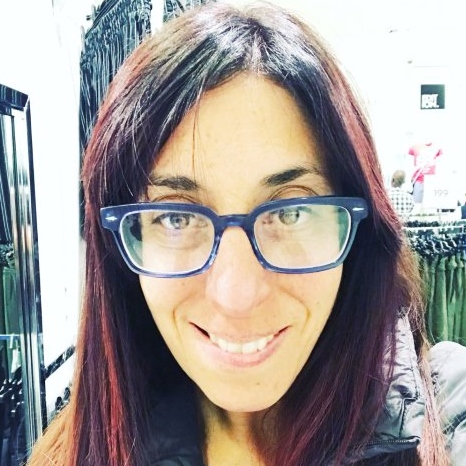Religion
The audacity of hope in 2021

We will soon be singing the songs of Hallel at the Passover seder. Although we sing Hallel many times in the year, the line from Psalm 118 will hold particular resonance, “Min heMeitzar karati, Anani bamerchavya” (From the narrow place, I called out to G-d, G-d answered me with expanse).
The resonance of this line for Passover is that Mitzrayim (Egypt) shares the same linguistic root as Meitzar (the narrow place). On Pesach, when we sing: “Egypt our place of slavery and the experience of constriction are one”, it seems as if freedom occurs dramatically and suddenly. We cry out to G-d from places of tightness, and G-d answers with expansion, we are free.
This might be how we tell the exodus story thousands of years later. However, if we study the story of exodus, we can see that it was a case of stops and starts until we actually arrived at freedom.
From the first time that G-d announced to Moses that he would respond to the cries of the Israelites until we finally sang the Song of the Sea was a long road filled with ten plagues, increased suffering, and glimmers of hope, an interplay of light and dark.
This year marks exactly a year since South Africa went into its first hard lockdown. Indeed, it was announced a week before Passover. By Pesach, our entire world had changed. We had entered the narrow place.
Some of us had a seder alone, others were fortunate to have immediate family. Yet, we all felt the pain of being isolated from the ones we loved dearly and we were all confronted by the terror of not knowing how the fabric of our known lives would be touched by the virus.
As we contemplated our own fate, we realised that this would have devastating consequences for the most vulnerable in our societies.
One year later, many of us have lost beloveds. Many have lost their livelihoods. The inequalities in our society have deepened, and we shall have to work with this trauma for years to come.
At the same time, we are now in an interplay of light and dark. There is hope on the horizon. The vaccine has arrived. It’s being administered around the world and in South Africa. People are chanting prayers of gratitude.
Just this past week, I went to buy groceries and an elderly woman wearing a mask made a joke to me as I passed by. I looked at her with appreciation and awe to be able to connect with older people again, to have moments of togetherness.
Writer Mari Andrew characterises it well when she says, ‘’For now I want to embrace this finicky in-between season when one day feels like a setback and the next feels like a leap forward. Growth and decay, hand-in-hand, with delicate flowers on the path.”
How do we “do” in-between? In the deepest time of despair in the exodus story, the Midrash tells us that the men lost their desire to procreate. But the women resisted. They would go down to where the men worked. Then they would take out their copper mirrors and look into them with their husbands. She would say, “I am more attractive than you,” and he would say, “No, I am more attractive than you.” In this playful manner, the women would awaken desire in their husbands, and procreation resumed.
Clinical psychologist Leanne Zabow suggests that this idea of looking into mirrors is about re-awakening and re-constellating the idea of potential. Mirrors became a portal to reflect not only on what is, but what could be. The men might have felt undermined, oppressed, and despondent. But the play of reflecting and reflection in these mirrors reminded them of the selves they were and they might become. Perhaps the width of expanse begins not with G-d saving us in an outright gesture of redemption, but with our persistent and audacious hope.
Just before Pesach 1939, on the eve of World War II, the Hassidic Rebbe Kalnymus Kalman Shapira (writer of the Esh Kodesh) wrote a letter to his community. He had exhorted them to leave Poland but as the year rolled on, it became almost impossible for many to leave. In this letter, knowing that the reality ahead for his people was grim and that evil huddled at the door, he instructed his followers to be joyous on Pesach.
He wrote, “Your joy should so exalted that you feel that you can barely hold yourself back from breaking into an ecstatic dance, leaping from the earth to the heavens. When you sit at the seder table, you imagine yourself sitting down to a festive meal in Gan Eden itself, participating in the celebration of the final redemption.”
It’s not my intention to compare the hardships of our pandemic to the monstrous atrocities of the Holocaust. But I’m struck by the rebbe’s radical resistance to despair. He knew what his people faced, yet he invited them to feel joy on Pesach night. It’s deeply moving!
This year, we are still betwixt and between. We aren’t yet freed from our experience of the narrow place. Yet, how we long for it! We can sense its possibility.
We may still have to deal with the ups and downs of this time. But on Pesach night, the Esh Kodesh invites us to become radical imagineers of possibility. We have a responsibility to hold up the copper mirrors of the Israelite, and remind ourselves and each other of the expanse, the possibility of lives fully lived.
For seder night, we enter into joy and sing our redemption song. The time is a coming.
• Adina Roth is a clinical psychologist in private practice, and a teacher of Jewish Studies.

Natalie
March 26, 2021 at 3:35 pm
A magnificent piece. Thank you Adina